These 9 Marvellous Doorways in Amer Fort & City Palace Offer a Glimpse of Jaipur’s History
Aparna Rajagopalan shares her memories of the beautiful city of Jaipur, with pictures of some of marvellous doorways that each have a story to tell.

Aparna Rajagopalan shares her memories of the beautiful city of Jaipur, with pictures of some of marvellous doorways that each have a story to tell.
I have been fortunate to visit Jaipur on a number of occasions, both as a student of design and as a tourist. When I recently got an opportunity to revisit the city, I decided to spend time photo documenting the City Palace, Amer Fort and other places nearby. The palaces and their structures fascinate me as they represent a bygone era, which is impossible to replicate in this day and age.
But while exploring these landmarks, I noticed that many of their doorways were singular in character — be it the imposing gateways with intricate frescoes at the entrance or the smaller, nondescript doors inside the palaces. Each has a role to play and a story to tell. In City Palace, they reflect the influence of Mughal, European and Indian Shilpa Shastra styles, whereas in the Amer Fort it is the Hindu Rajput style.
As a designer I am particularly interested in the influence of culture in society and its expressions. Jaipur captures these eclectic articulations perfectly. The Mughal and Rajput influences shine through not just in the city’s architecture but also in the art, cuisine and more. Documenting its royal past through its doorways is my attempt to celebrate this historic city.
1. Ganesh Pol, Amer Fort
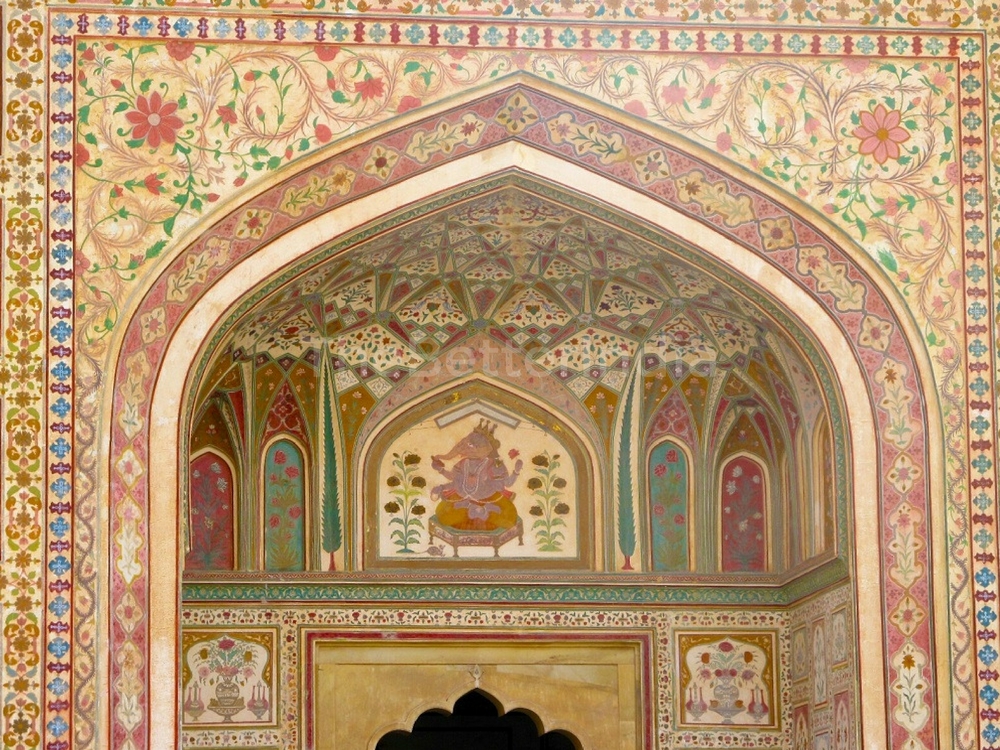
The Ganesh Pol or Gate is the entry to the private palaces of the Maharajas. Built under the orders of Mirza Raja Jai Singh, it is
covered with elaborate frescoes and a Ganesh painted above the gate, symbolising good luck.
2. Peacock Gate, Pritam Niwas Chowk, City Palace
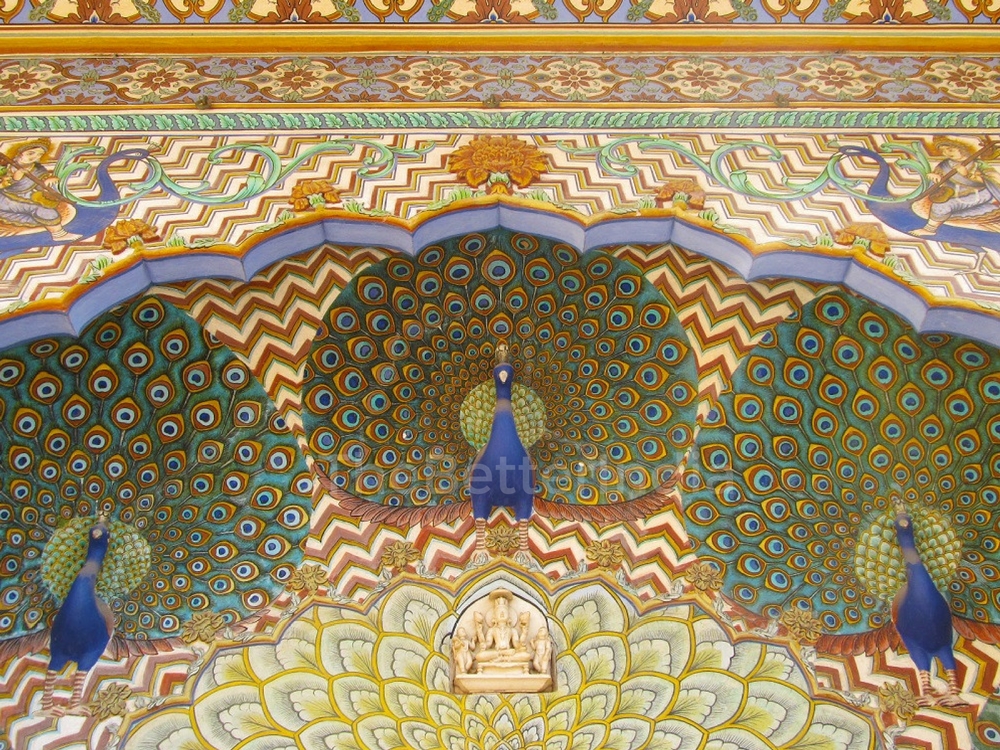
Pritam Niwas Chowk is the inner courtyard of the City Palace. It has four smaller gates, each themed around the four seasons and dedicated to a particular Hindu god. The northeastern peacock gate represents autumn and has a small idol of Lord Vishnu on its lintel.
3. Lotus Gate, Pritam Niwas Chowk, City Palace
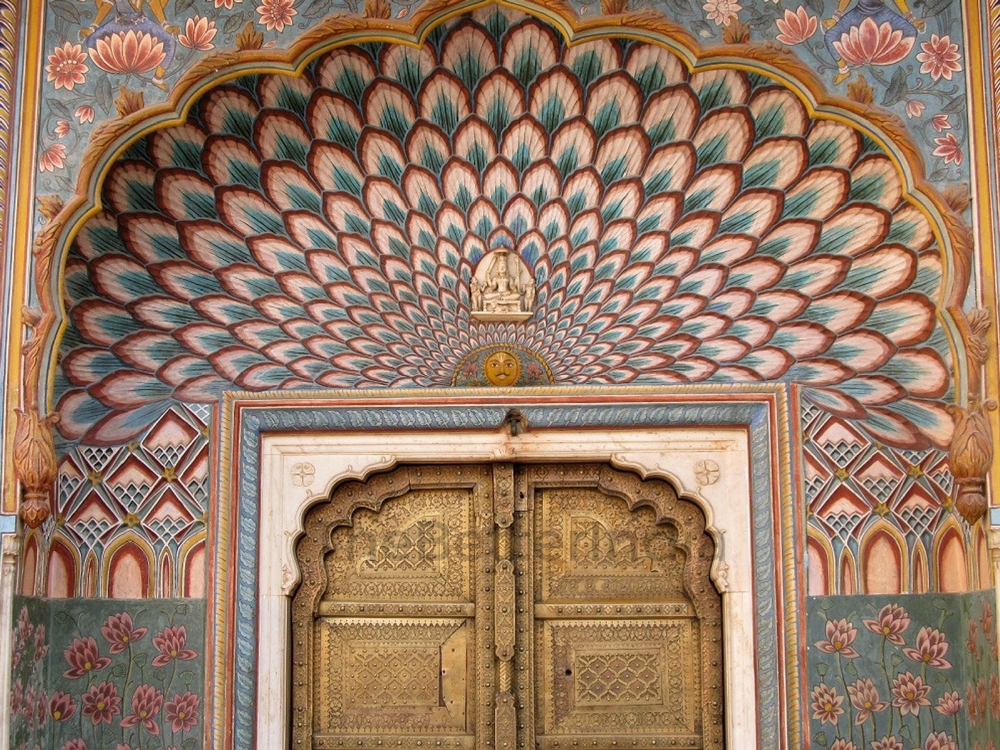
The Lotus Gate in the southwest is adorned with dramatic lotus petals and flower patterns. It represents the summer and lord Shiva.
4. Rose Gate, Pritam Niwas Chowk, City Palace
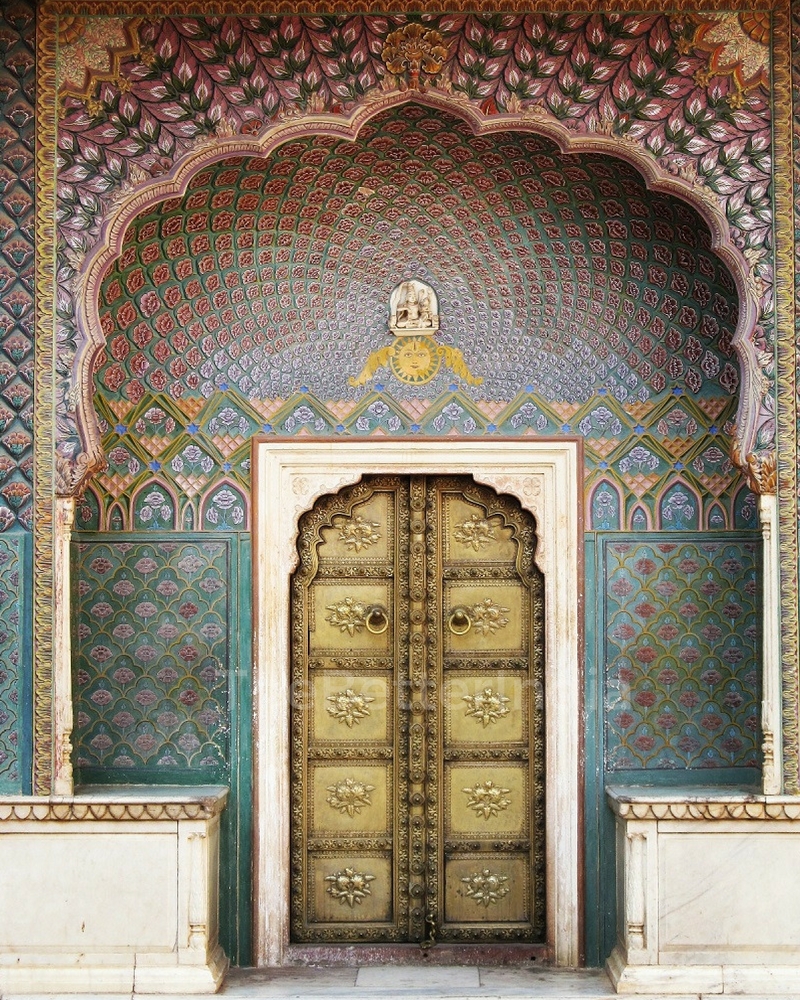
The winter season is showcased by the Rose Gate. Filled with repeating rose patterns, it is dedicated to Goddess Devi.
5. Leheriya Gate, Pritam Niwas Chowk, City Palace
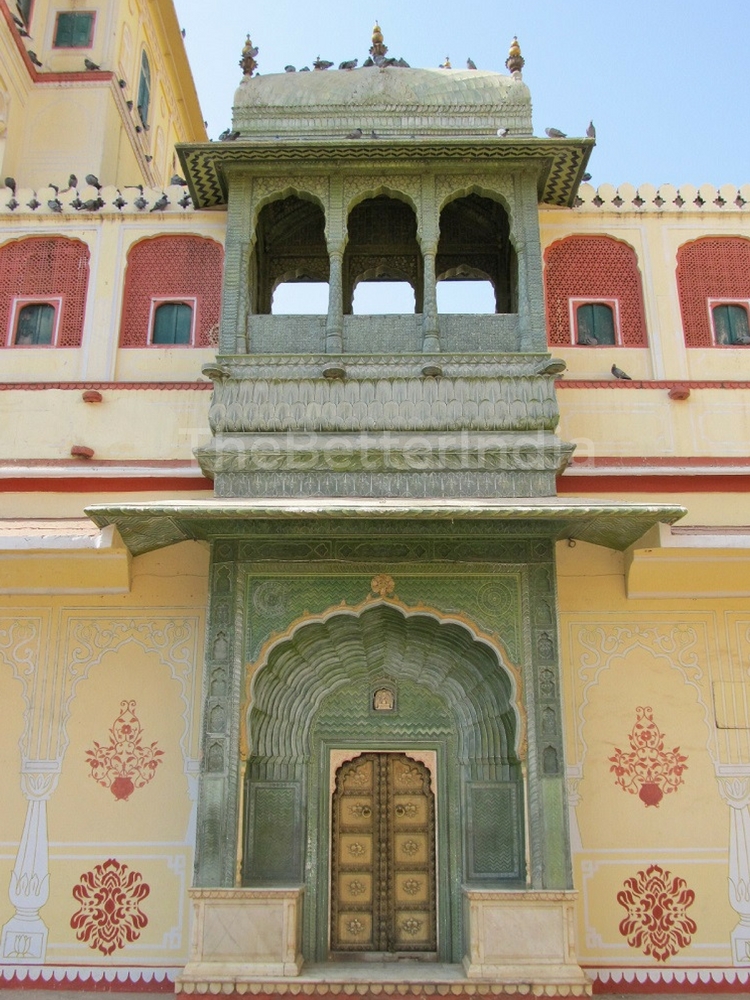
The fourth gate, also called the Leheriya (waves) gate, is on the northwest side of the courtyard. It is in a gorgeous green colour, indicating spring and dedicated to Lord Ganesha.
6. Diwan-E-Aam, Amer Fort
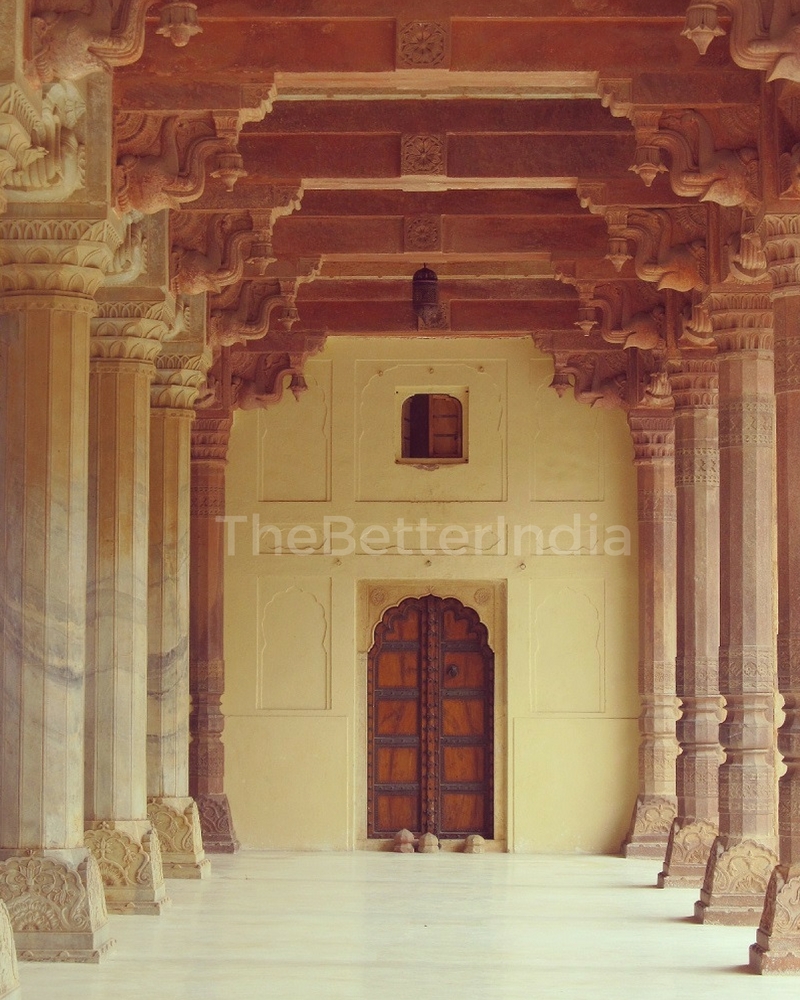
Diwan-E-Aam or the Hall of Public Audience is a courtyard that is marked by 27 columns, each with an elephant shaped capital. It also has rooms leading off that were used by royalty.
7. Entrance, Amer Fort
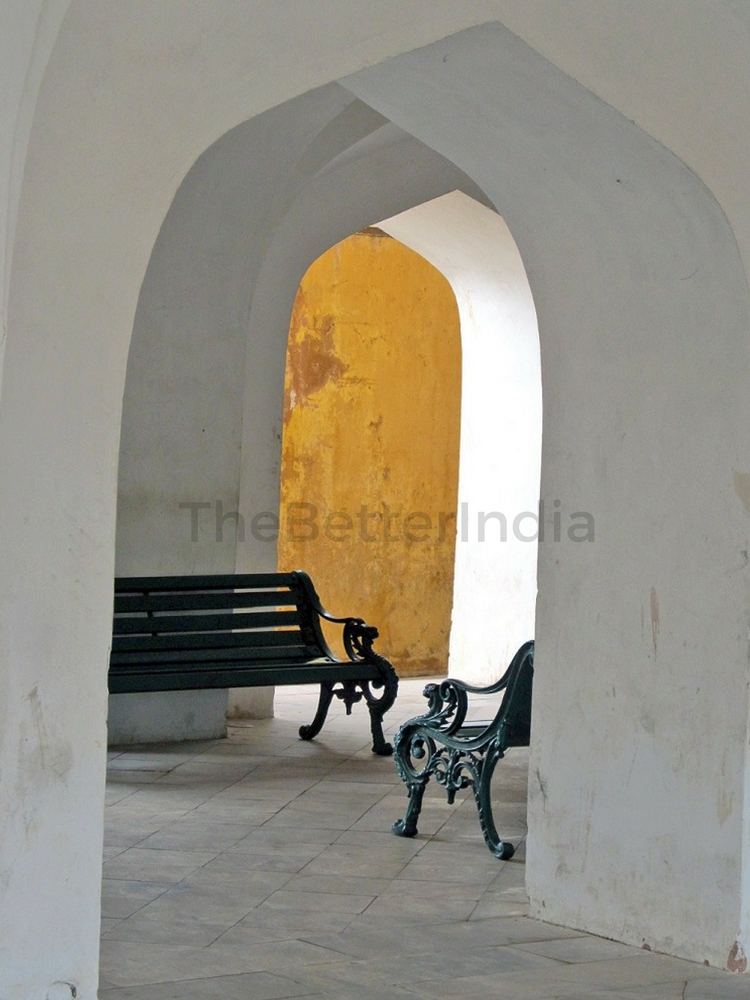
Benches seen through the arched corridors at the entrance of Amer Fort present a departure from the usual ornate doorways of the rest of the palace. This place has an almost Mediterranean feel.
8. Balcony Door, Mansingh Palace Square, Amer Fort
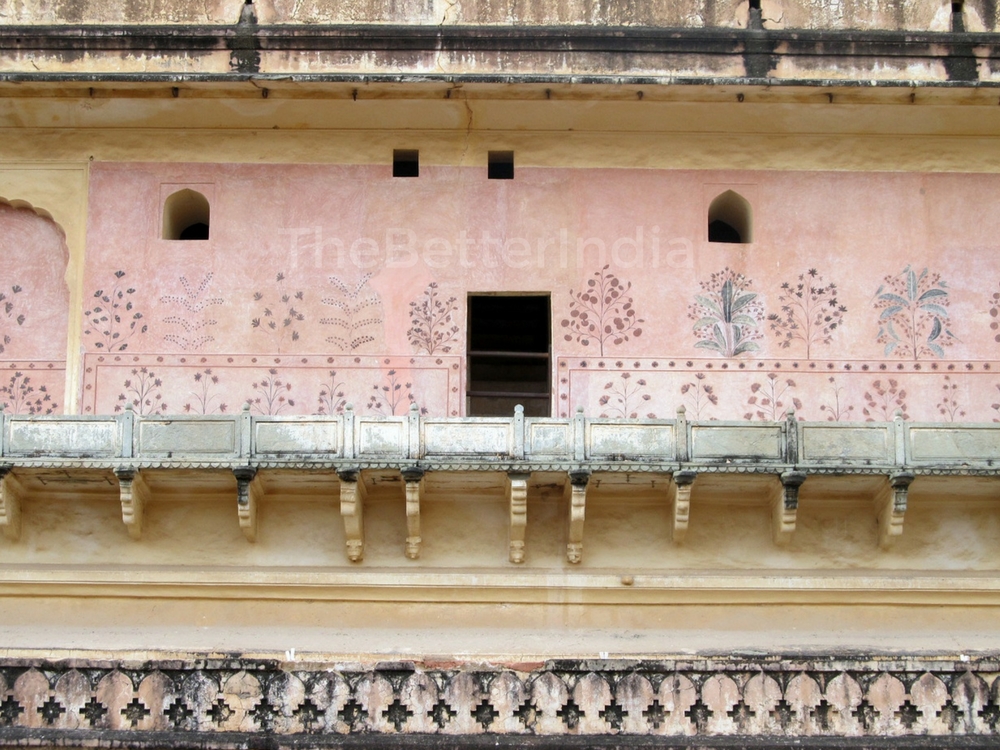
The courtyard at the Mansingh Palace, Amer Fort, is surrounded by balconies on the first floor and has doors overlooking the central pavilion. The walls are decorated with floral patterned frescoes.
9. Door to the Dakshinottar Bhitti Yantra, Jantar Mantar
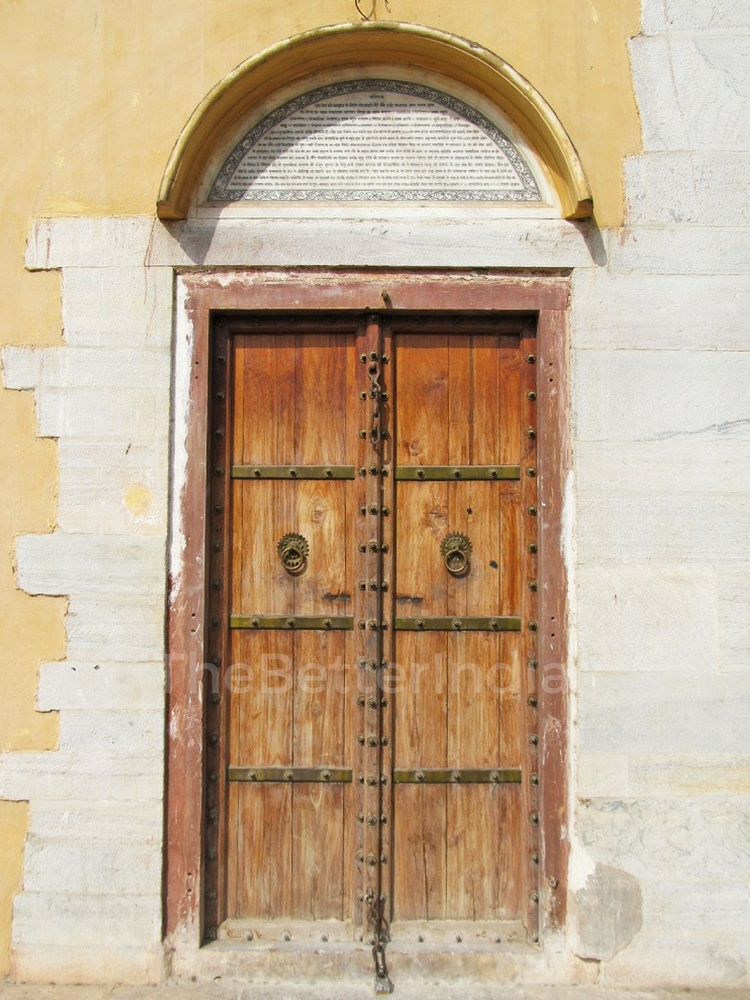
This door provides access to the Dakshinottar Bhitti Yantra, which is an instrument used for observing the different altitudes of celestial bodies. The marble arched panel on top of the door provides a detailed description of the yantra.
– Aparna Rajagopalan
You can have a look at Aparna’s work here.
Like this story? Or have something to share? Write to us: [email protected], or connect with us on Facebook and Twitter (@thebetterindia).
If you found our stories insightful, informative, or even just enjoyable, we invite you to consider making a voluntary payment to support the work we do at The Better India. Your contribution helps us continue producing quality content that educates, inspires, and drives positive change.
Choose one of the payment options below for your contribution-
By paying for the stories you value, you directly contribute to sustaining our efforts focused on making a difference in the world. Together, let’s ensure that impactful stories continue to be told and shared, enriching lives and communities alike.
Thank you for your support. Here are some frequently asked questions you might find helpful to know why you are contributing?


This story made me
-
97
-
121
-
89
-
167











